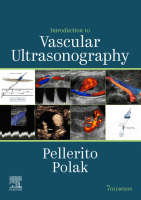Physical Address
304 North Cardinal St.
Dorchester Center, MA 02124

Introduction Noninvasive testing for lower extremity arterial disease provides objective information that can be combined with the clinical history and physical examination to serve as the basis for decisions regarding further evaluation and treatment. One of the most critical decisions…

Introduction Doppler ultrasound is extremely useful in the evaluation of the many problems facing the hemodialysis patient. It is a noninvasive technique that demonstrates vascular detail without the risk of phlebitis or contrast reaction associated with contrast venography. Current Dialysis…

Introduction The upper extremity arterial system requires a different diagnostic approach than that used in the lower extremity. Although progression of focal atherosclerosis or acute arterial emboli are almost always the cause of symptomatic disease in the lower extremity, upper…

Introduction Atherosclerosis of the peripheral arteries is recognized as a major cause of death and disability. It has been estimated that at least 8 million people in the United States have stenosis or occlusion of one or more of their…

Introduction A solid familiarity of the anatomy of the upper and lower extremity arteries is required for the evaluation of arterial disease. This chapter provides an overview of the upper and lower extremity arterial anatomy. Normal anatomy, common variants, and…

Introduction In 1965, Miyazaki and Kato first reported the use of continuous-wave Doppler ultrasound for the assessment of extracranial cerebral vessels. Despite its rapid development in other medical fields, this technique was not applied to the intracranial vessels until 1982.…

Introduction The association of carotid atherosclerotic disease with symptomatic cerebrovascular disease (i.e., transient ischemic attacks), amaurosis fugax, and stroke, is well established. Carotid endarterectomy and stenting are also effective in managing symptomatic patients with high-grade carotid stenosis. However, the implications…

Introduction Carotid occlusion is one of the most important diagnoses that is made in the vascular laboratory or imaging department. The distinction between carotid occlusion and near-total occlusion or high-grade stenosis is critical as treatment options remain available for severe…

Introduction The identification of carotid artery stenosis is the most common indication for cerebrovascular ultrasound. The majority of stenotic lesions occur in the proximal internal carotid artery (ICA); however, other sites of involvement in the carotid system may or may…

Introduction The ultrasound evaluation of carotid artery atherosclerosis has evolved over the years. At the start, B-mode (gray-scale) images were used to evaluate the severity of carotid artery disease in the hope of supplementing traditional arteriography. Unfortunately, it became apparent…